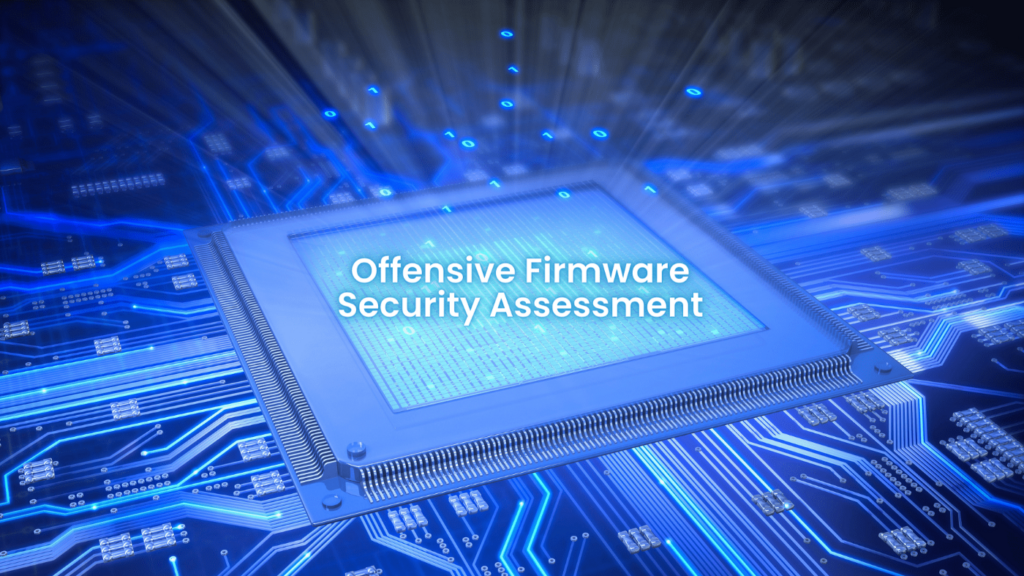
In the world of cybersecurity, there are a lot of terms and technologies that can be confusing to the layperson. Firmware security assessment is one of those terms. In this article, we’ll explain what firmware security assessment is and why it matters to us.
What is firmware?
Firmware is a type of software that is embedded into devices and controls how they operate. It is responsible for low-level tasks such as booting up the device and basic functions like handling input/output and memory management. Firmware security is important because it can be used to exploit vulnerabilities in devices and gain unauthorized access. Despite its importance, firmware is often overlooked when it comes to security. This can be a costly mistake, as firmware is just as susceptible to attack as any other type of software.
A firmware security assessment is a comprehensive examination of the security of a device’s firmware. This assessment looks at the entire firmware development process, from design to deployment, in order to identify any potential security vulnerabilities. By identifying and addressing these vulnerabilities, firms can help ensure that their devices are better protected against attack.
Firmware security is an important consideration for any organization that relies on electronic devices. By conducting a firmware security assessment, firms can help ensure that their devices are better protected against attack.
What is firmware security assessment?
Firmware security assessment is the process of identifying and assessing the security risks associated with firmware. Firmware is the low-level software that controls a device, such as a computer, smartphone, or router. It is stored in read-only memory (ROM) and is not typically user-editable.
Firmware security risks can come from a variety of sources, including malicious code that is inserted into firmware during its development or manufacturing process, or vulnerabilities that exist in the firmware itself. These risks can result in a wide range of adverse outcomes, including data breaches, denial of service attacks, and system compromise.
A comprehensive firmware security assessment should cover all stages of the firmware development lifecycle, from design and development to manufacturing and distribution. It should identify both known and unknown risks, and assess their impact on the confidentiality, integrity, and availability of the firmware.
Firmware security assessments are critical to ensure the safety and security of devices and systems that rely on firmware. With the increasing complexity of devices and systems, and the growing number of threats targeting firmware, these assessments are becoming more important than ever.
Why does firmware security assessment matter to us?
As the world becomes increasingly connected, the security of our devices is more important than ever. Firmware is the low-level software that helps a device run and it can be found in everything from smartphones to printers. A recent study by Forescout found that 71% of devices have vulnerabilities in their firmware. That’s a huge problem because if an attacker can exploit those vulnerabilities, they can gain control of the device.
Firmware security assessment is the process of identifying and assessing vulnerabilities in firmware. It’s an important part of securing our devices because it helps us find and fix vulnerabilities before they can be exploited.
Unfortunately, firmware security assessment is often overlooked. Many organizations don’t realize that their devices have firmware or they don’t think it’s worth the effort to assess it. But as the Forescout study shows, ignoring firmware security can have serious consequences.
How can we assess the security of IoT / Embedded Device firmware?
Organizations are now turning their attention to the security of firmware in IoT/embedded devices. A recent study by Gartner found that “by 2023, over 30% of new IoT devices will have had their firmware security assessed by an independent party, up from less than 1% in 2019.”1 This dramatic increase is due to the growing recognition of the importance of firmware security and the unique challenges it poses.
Firmware Security Assessment (FSA) is the process of evaluating the security of a device’s firmware. This can be done manually or with automated tools. Manual assessment is more common, but as devices become more complex and the number of devices increases, automated tools will become more important.
There are two main types of FSA: white-box and black-box. In a white-box assessment, the assessor has complete access to the device’s code and architecture. In a black-box assessment, the assessor has limited or no access to the code or architecture. White-box assessments are generally more thorough, but black-box assessments can still be useful, especially when assessing proprietary devices where access to code is not possible.
The goal of an FSA is to identify vulnerabilities that
The Value of a Firmware Security Assessment for your Organization
As digital devices become more sophisticated, the need for comprehensive firmware security assessments increases. Firmware is the software that controls a device’s essential hardware functions. It is stored in read-only memory, which makes it difficult to update or change. This can leave firmware vulnerable to attack.
A firmware security assessment can help your organization identify and mitigate risks associated with firmware vulnerabilities. By testing the security of your devices’ firmware, you can ensure that they are better protected against attacks.
Firmware security assessments can be used to evaluate the security of a wide range of devices, including routers, printers, and storage systems. They can also be used to assess the security of embedded systems, such as those used in industrial control systems and medical devices.
Embedded systems are particularly vulnerable to attack because they often have limited resources and are difficult to update. A comprehensive firmware security assessment can help ensure that these systems are secure and running properly.
Firmware security assessments can be complex and time-consuming. However, they are an important part of keeping your organization’s devices safe from attack. By investing in a firmware security assessment, you can help protect your organization’s critical infrastructure and data.
Conclusion
Firmware security assessment is an important part of keeping our devices and data safe. By understanding what firmware is and how it works, we can better assess the risks associated with it and take steps to protect ourselves. While there are some challenges associated with firmware security assessment, the benefits outweigh the costs, making it a valuable tool for us all.


